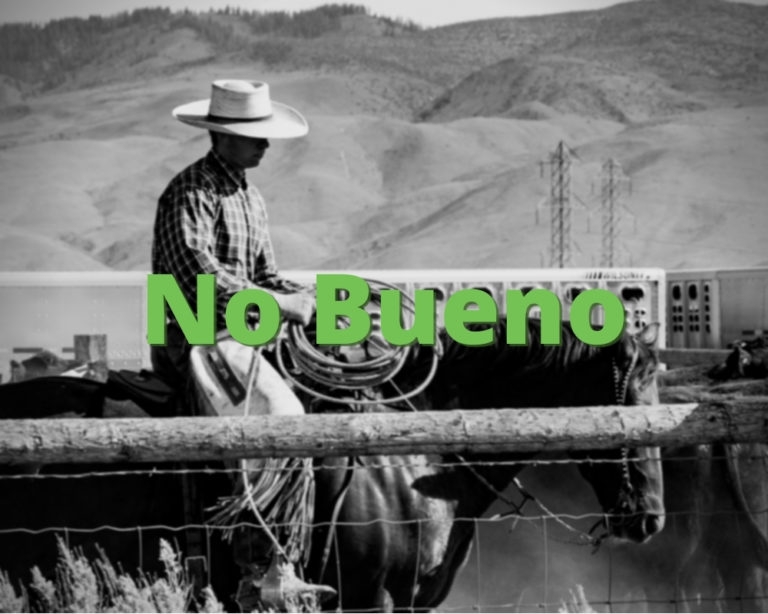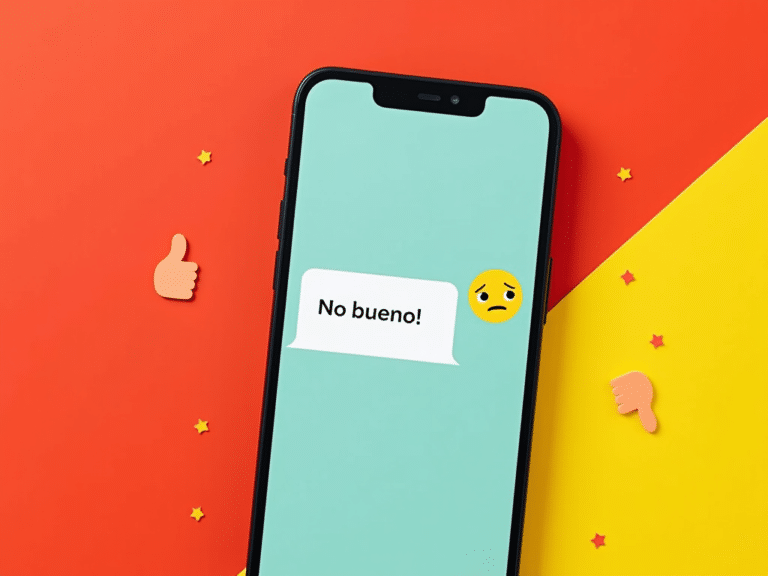What Does "No Bueno" Mean? | Usage & Examples
Is "no bueno" truly Spanish, or is it a linguistic imposter masquerading as the real deal? The truth is, while it borrows Spanish vocabulary, "no bueno" is a distinctly American creation, a testament to the ever-evolving nature of language and cultural exchange.
The phrase "no bueno," meaning "not good," has permeated American slang, particularly in the Southwest. It rolls off the tongue with an easy informality, adding a touch of casual flair to everyday conversations. Its simplicity is deceptive, however, masking a complex interplay of language, culture, and appropriation. While its components are undeniably Spanish "no" meaning "no" and "bueno" meaning "good" combining them in this way breaks the rules of Spanish grammar. A native speaker would opt for "no es bueno" or "no est bien" to convey the same sentiment. This grammatical faux pas instantly outs a non-native speaker attempting to sprinkle their conversation with a bit of perceived Spanish flavor.
| Term | No Bueno |
| Meaning | Not good |
| Language of Origin | Mock Spanish (derived from Spanish words) |
| Grammatical Correctness in Spanish | Incorrect |
| Correct Spanish Alternatives | No es bueno, no est bien |
| Common Usage | Informal American English, particularly in the Southwest |
| Cultural Context | Often perceived as a casual, humorous, or even slightly disrespectful way of expressing disapproval. |
| Reference | SpanishDict |
The widespread use of "no bueno" reflects a broader phenomenon: the adoption and adaptation of foreign words and phrases into English. This linguistic borrowing enriches the language, adding new shades of meaning and cultural nuances. Yet, it also raises questions about authenticity and respect. Is it cultural appreciation or appropriation? The answer, like language itself, is fluid and open to interpretation.
The popularity of "no bueno" has been fueled by its appearances in popular culture. From the gritty realism of "Breaking Bad" to countless other television shows and movies, the phrase has become a shorthand for expressing dissatisfaction, often with a touch of humor. Jesse Pinkman's frequent use of "no bueno" in "Breaking Bad," for instance, cemented its place in the lexicon of popular slang, imbuing it with a particular association with his character and the show's milieu.
Despite its prevalence, using "no bueno" in front of a Spanish speaker risks coming across as ignorant or even disrespectful. Its the equivalent of a tourist shouting mangled phrases in a foreign country, expecting to be understood and applauded for their effort. The intention might be harmless, even well-meaning, but the effect can be cringe-worthy. For those genuinely interested in speaking Spanish, learning the correct phrases, such as "no es bueno" or "no est bien," demonstrates respect for the language and culture.
The subtle difference between "no es bueno" and "no est bien" reveals the complexities of the Spanish language. "Bueno" generally describes the inherent quality of something, while "bien" refers to its state or condition. Thus, "no es bueno" means "it's not good" in a general sense, while "no est bien" means "it's not right" or "it's not okay" in a specific situation. These nuances are lost in the simplified "no bueno," further highlighting its status as a separate entity from proper Spanish.
The continued use of "no bueno" speaks volumes about the dynamism of language. It's a living, breathing entity, constantly evolving through borrowing, adaptation, and reinvention. While its grammatical inaccuracy might irk Spanish speakers, its prevalence in American English is undeniable. "No bueno" is a reminder that language is not static; it's a reflection of the cultural landscape, shaped by the interactions and influences of diverse communities.
So, the next time you hear or use "no bueno," remember its unique journey. It's a phrase born from the intersection of two languages, a testament to the power of cultural exchange, and a quirky reminder that sometimes, even incorrect grammar can find a place in the ever-shifting sands of language.
Understanding the nuances of "no bueno," its origins, and its proper counterparts in Spanish, allows for a more informed and respectful approach to language. While "no bueno" may have its place in casual conversation, recognizing its limitations demonstrates a sensitivity to the complexities of language and culture, allowing us to navigate the linguistic landscape with greater awareness and appreciation.
Beyond the simple meaning of "not good," "no bueno" encapsulates a larger conversation about language, culture, and appropriation. Its a reminder that words carry weight, and even seemingly innocuous slang can have unintended consequences. By understanding the nuances of language and its cultural context, we can communicate more effectively and respectfully, fostering genuine cross-cultural understanding.



Detail Author:
- Name : Pascale Bashirian
- Username : chessel
- Email : maryjane.murray@hotmail.com
- Birthdate : 1998-06-10
- Address : 374 Brady Parkways West Kane, CO 96298-9198
- Phone : 919-206-2913
- Company : Robel-Kirlin
- Job : Entertainer and Performer
- Bio : Sunt numquam mollitia fuga mollitia. Totam illo ut quis nihil hic sed. Corporis a cupiditate nostrum. Quod aliquam qui delectus ut.
Socials
linkedin:
- url : https://linkedin.com/in/kilback1979
- username : kilback1979
- bio : Iusto id reiciendis commodi et.
- followers : 2129
- following : 662
facebook:
- url : https://facebook.com/kilbackg
- username : kilbackg
- bio : At id ea praesentium distinctio tempore ea. Sit vitae et tempore incidunt.
- followers : 5381
- following : 2370
instagram:
- url : https://instagram.com/geoffrey_official
- username : geoffrey_official
- bio : Hic nulla sit eaque rerum autem ipsam qui consequuntur. Accusantium sed est soluta dolorem.
- followers : 3066
- following : 692
tiktok:
- url : https://tiktok.com/@geoffrey.kilback
- username : geoffrey.kilback
- bio : Exercitationem perspiciatis sint recusandae sunt.
- followers : 6551
- following : 1405